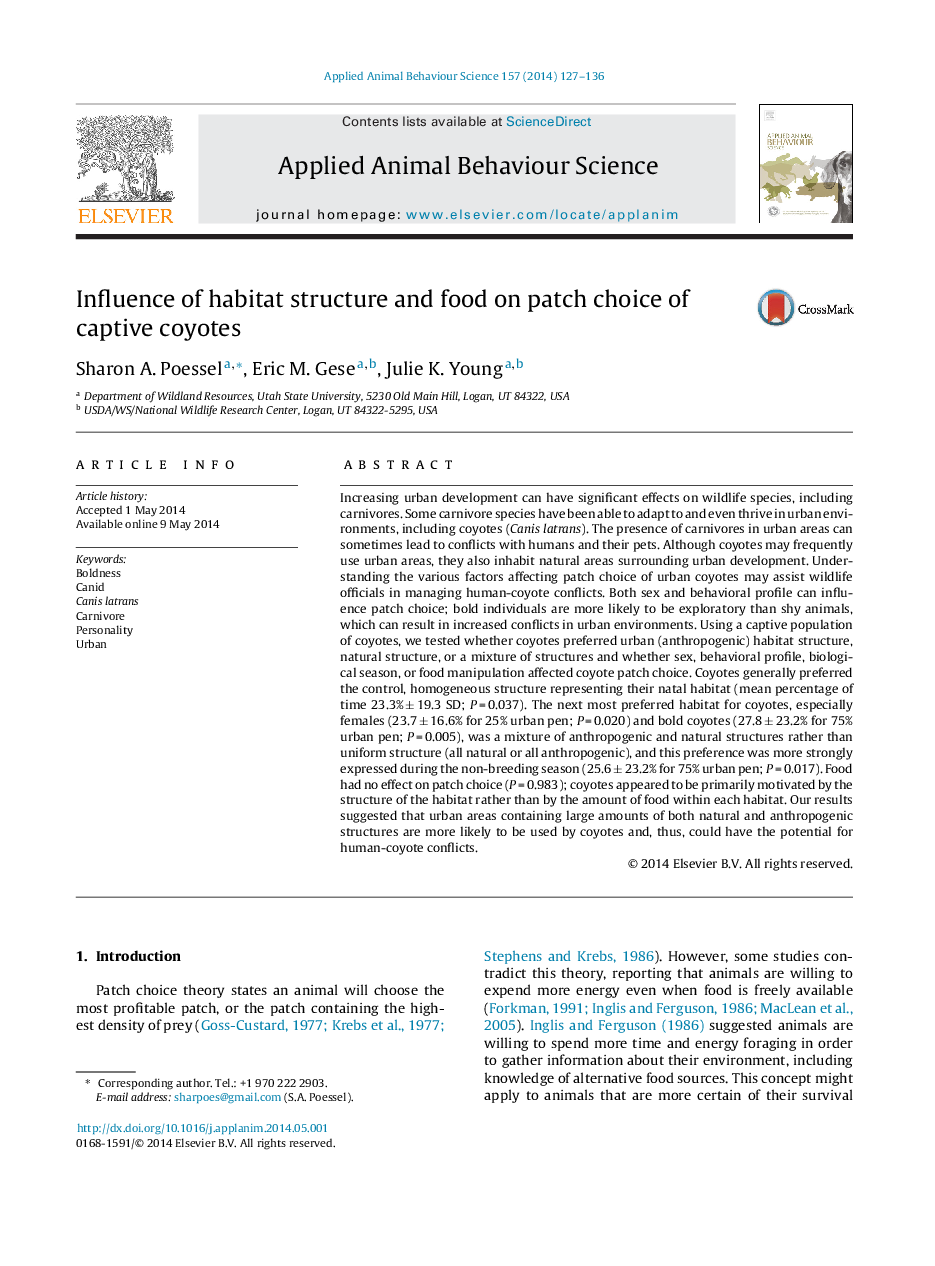| کد مقاله | کد نشریه | سال انتشار | مقاله انگلیسی | نسخه تمام متن |
|---|---|---|---|---|
| 6379680 | 1625349 | 2014 | 10 صفحه PDF | دانلود رایگان |
- We tested patch choice in captive coyotes using urban and natural habitat.
- Coyotes preferred the homogeneous structure of their natal habitat.
- Coyotes, especially females and bold animals, next preferred a mixture of habitat.
- Food had no effect on coyote patch choice.
- Urban areas with both types of habitat are more likely to be used by coyotes.
Increasing urban development can have significant effects on wildlife species, including carnivores. Some carnivore species have been able to adapt to and even thrive in urban environments, including coyotes (Canis latrans). The presence of carnivores in urban areas can sometimes lead to conflicts with humans and their pets. Although coyotes may frequently use urban areas, they also inhabit natural areas surrounding urban development. Understanding the various factors affecting patch choice of urban coyotes may assist wildlife officials in managing human-coyote conflicts. Both sex and behavioral profile can influence patch choice; bold individuals are more likely to be exploratory than shy animals, which can result in increased conflicts in urban environments. Using a captive population of coyotes, we tested whether coyotes preferred urban (anthropogenic) habitat structure, natural structure, or a mixture of structures and whether sex, behavioral profile, biological season, or food manipulation affected coyote patch choice. Coyotes generally preferred the control, homogeneous structure representing their natal habitat (mean percentage of time 23.3% ± 19.3 SD; P = 0.037). The next most preferred habitat for coyotes, especially females (23.7 ± 16.6% for 25% urban pen; P = 0.020) and bold coyotes (27.8 ± 23.2% for 75% urban pen; P = 0.005), was a mixture of anthropogenic and natural structures rather than uniform structure (all natural or all anthropogenic), and this preference was more strongly expressed during the non-breeding season (25.6 ± 23.2% for 75% urban pen; P = 0.017). Food had no effect on patch choice (P = 0.983); coyotes appeared to be primarily motivated by the structure of the habitat rather than by the amount of food within each habitat. Our results suggested that urban areas containing large amounts of both natural and anthropogenic structures are more likely to be used by coyotes and, thus, could have the potential for human-coyote conflicts.
Journal: Applied Animal Behaviour Science - Volume 157, August 2014, Pages 127-136
